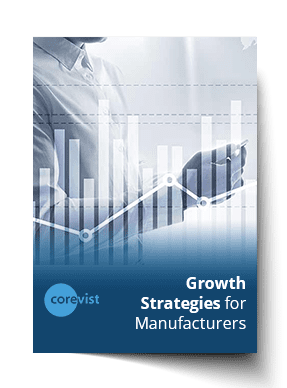Share
Author
George Anderson
Share
Editor’s note: Today’s post appears courtesy of Aaron Chio, Associate Partner with Clarkston Consulting.
To stay ahead of your customers’ B2B eCommerce expectations, you need a deep understanding of their needs. Too often in B2B eCommerce, internal user requirements are mistakenly classified as customer needs. In this post, we’ll outline key considerations you should keep in mind when building your company’s B2B eCommerce strategy.
Over the past several years, B2B companies have been trying to reimagine and redesign their digital shopping experiences to more closely mimic B2C experiences. By investing in digital enablement, B2B organizations can create ‘stickiness’ with customers while also driving further differentiation from their competitors.
This increasing interest in developing B2C-like digital experiences in a B2B world forces organizations to adapt their evolving list of digital best practices to stay competitive in their industry. As we look across client projects we’ve done at Clarkston Consulting over the past year, we see three key characteristics of B2B organizations that are succeeding in the digital world.
1. Deeply Understand Your Customer’s Digital Journeys
Customer experience cannot be an afterthought – your customer should be at the center of every decision you make. With that in mind, you should also understand that good ideas don’t come from what your company thinks the customer wants – those ideas should be based on research and customer data. Consumer insights surveys, website analytics and third-party customer data are great sources of data for making informed hypotheses about your customer journey.
Another simple way to obtain meaningful consumer insights is to directly ask for feedback. With a focus on shaping how companies and teams communicate, Slack exemplifies the value of this approach to insights by acquiring honest, immediate ideas from their customers on how to fine-tune their platform. Slack wants to provide their audience with the best experience possible, and they’ve done exactly that by building trust and forming relationships with their consumers.
Digital customer centricity is easier said than done, though, which is why it is important to generate an approach that is tailored to a specific target audience.
2. Build Personas to Create a Targeted Content Strategy
There are many ways for companies to connect with customers — social media, in person, or online — so identifying the most relatable method can be a challenge. The difficulty lies in understanding the various motivations, desires and needs of your customers. One approach is for B2B companies to create a representative number of user personas that encapsulate the major buyer preferences and purchasing behaviors. This enables companies to educate and interact with their buyers in an advantageous way prior to the purchase decision.
Marketing techniques vary based on the type of customer and the products or services offered. B2B companies can use a mix of these tools to attract and connect with their buyers on a deeper level. B2B companies already have an advantage when addressing their target consumer base because the audience usually has a common interest (e.g., purchasing electrical components or medical devices). To get ahead of the competition, it’s important to effectively communicate your value proposition through a variety of content.
Home Depot excels in this area by providing not only the base product information for customers to compare, but also project calculators, how-to guides and online workshops to help inform their decision-making. However, digital leaders need to understand the similarities and/or differences in their B2B vs. B2C customers (if/as applicable). For example, Home Depot’s B2C and B2B customer bases are very similar, with the key differentiator being the size of the project(s) the customer is completing. Not all companies can successfully feature the same content to both B2C and B2B customers while satisfying both of their end user needs.
For instance, there is a separate division of Wayfair for B2B consumers, Wayfair Professional, which customizes the onsite user experience based on their self-identified industry focus. Wayfair Professional develops specific content for their site to relate to their consumer base rather than using B2C materials, which may or may not be relevant for B2B customers. This distinction establishes Wayfair Professional as a key player in the B2B world and attracts B2B customers from a diverse set of industries.
3. Prepare for Catalog and Data Harmonization
A catalog is a critical component of successful marketing in B2B eCommerce. It should satisfy customer demands with what is available and easily findable, and it should look great doing it.
Catalogs come with a challenge, though. How do you ensure each customer sees only relevant SKUs?
Amazon may have everything a person would need to survive, but finding those items is a challenge in and of itself. Search algorithms are constantly changing, and since the algorithms factor in considerations such as keywords, prior clicks and hidden filters, customers don’t always see the most relevant products.
Of course, this gets easier if you have a smaller catalog (or you’re only offering one product line through B2B eCommerce). Though Apple is a consumer brand, their example is helpful. Apple has only a few core products, including the iPhone, MacBook and Apple Watch. Their strategy is to continuously evolve their core product functionalities while simultaneously adding select new products, such as AirPods and Apple TV. This narrow catalog provides clear focus to their business — and to the user experience on their site.
Moving Your B2B Digital Marketing Strategy Forward
In the past, the digital characteristics mentioned above might have looked more like a B2C experience than B2B. If you’re looking to stay at the forefront of future digital evolution, you need to adapt to industry trends and use your resources to not only understand your evolving consumers’ needs, but to educate and engage with them throughout their consumer journey.
NEW Report:
Growth Strategies for Manufacturers
Every manufacturer needs to grow in the digital age. Here’s the ultimate guide to growth strategies for manufacturers. Read now.











